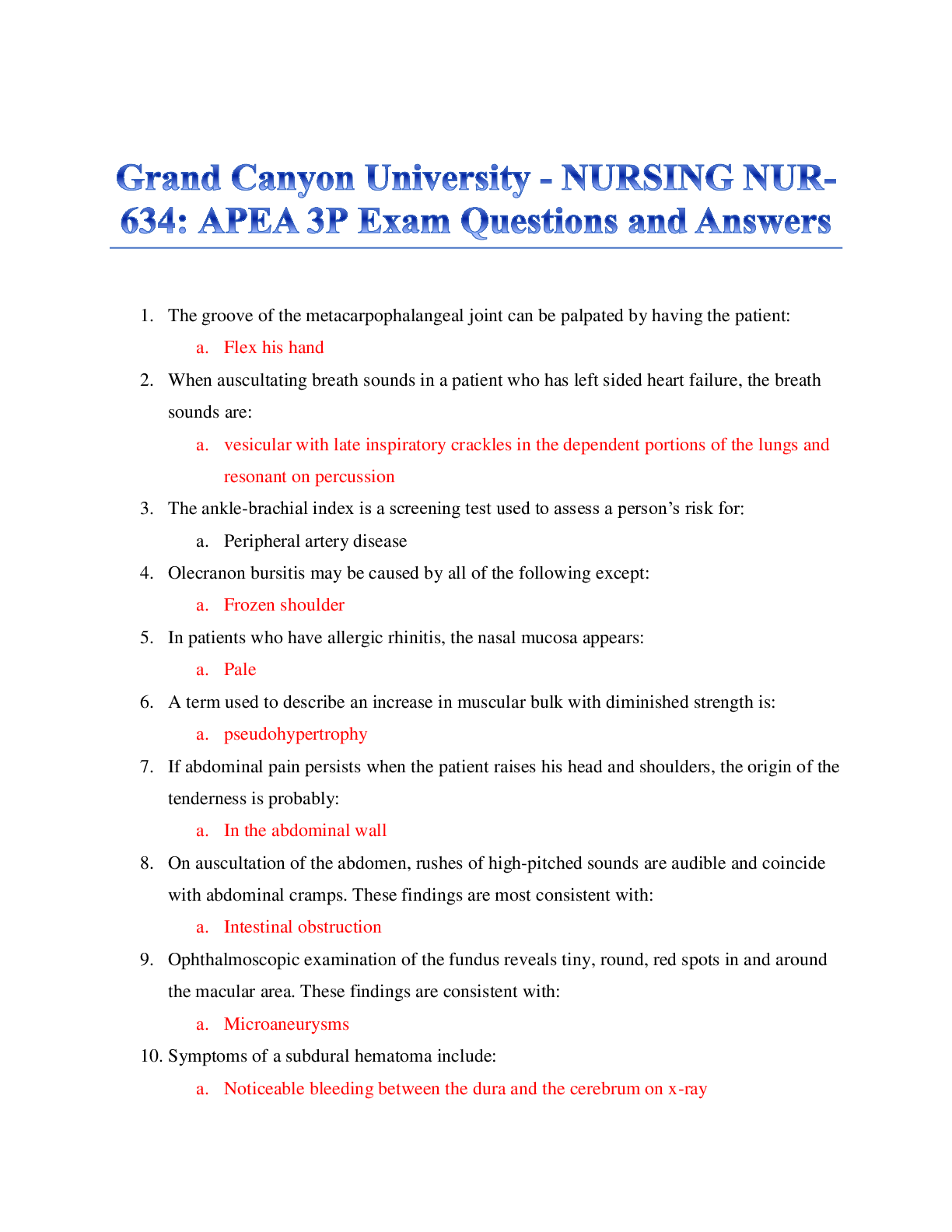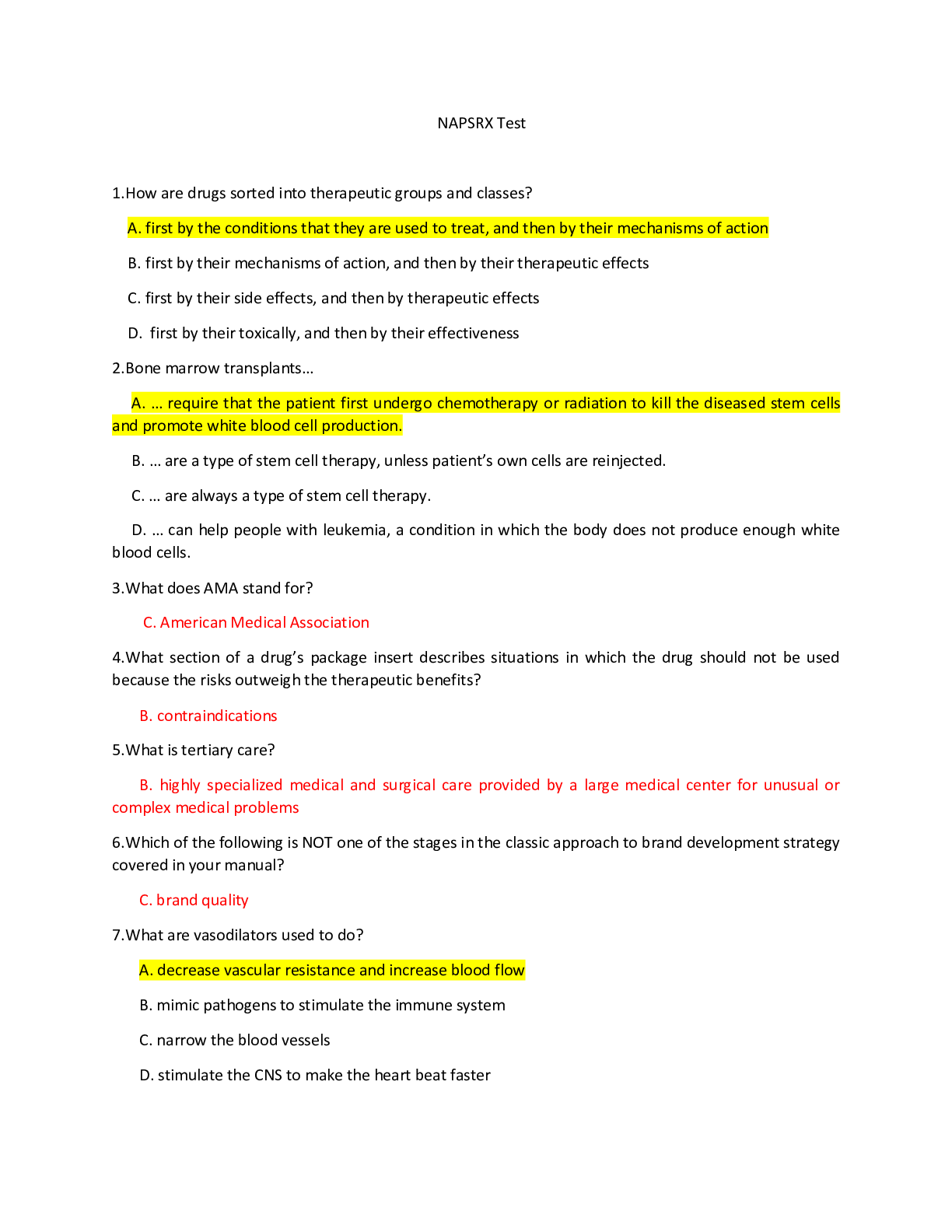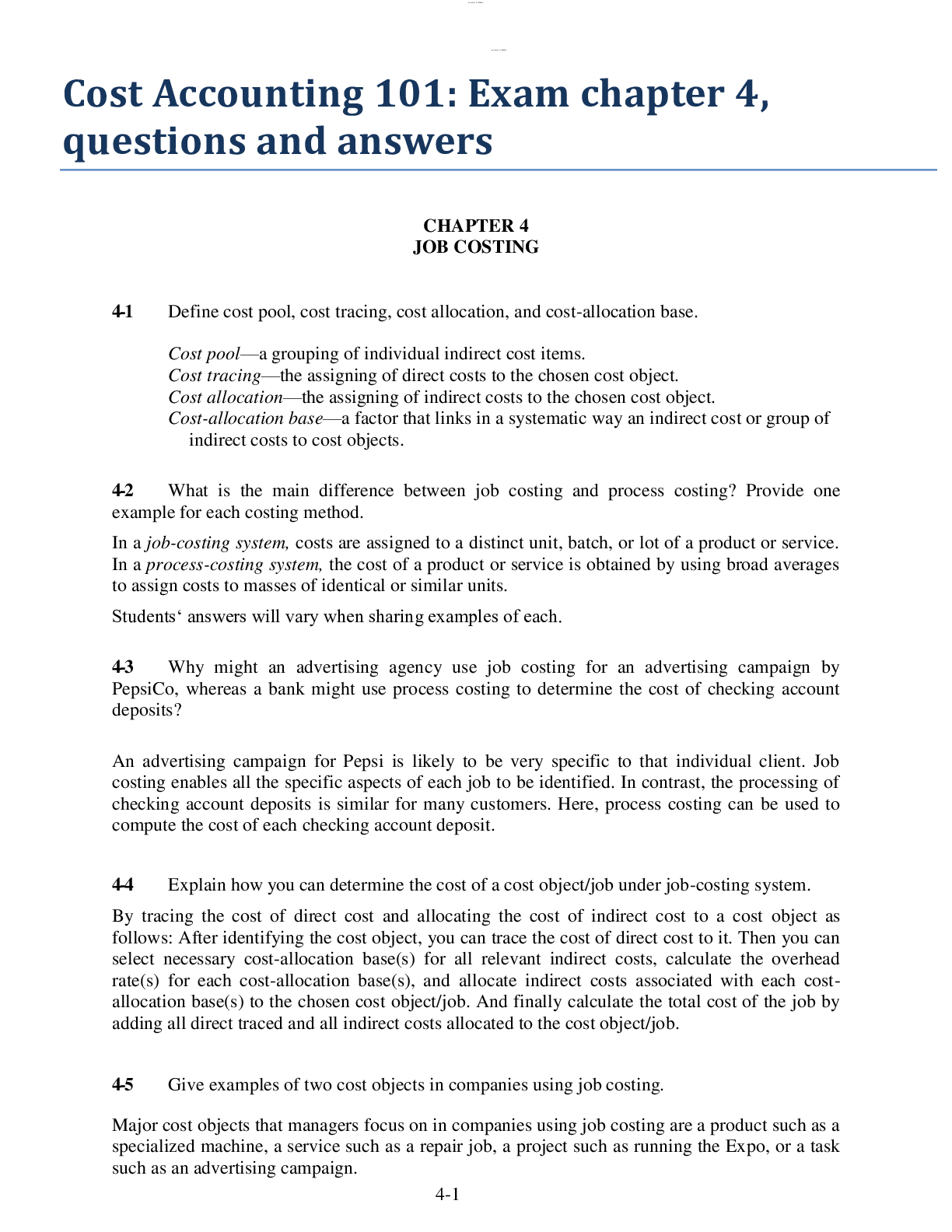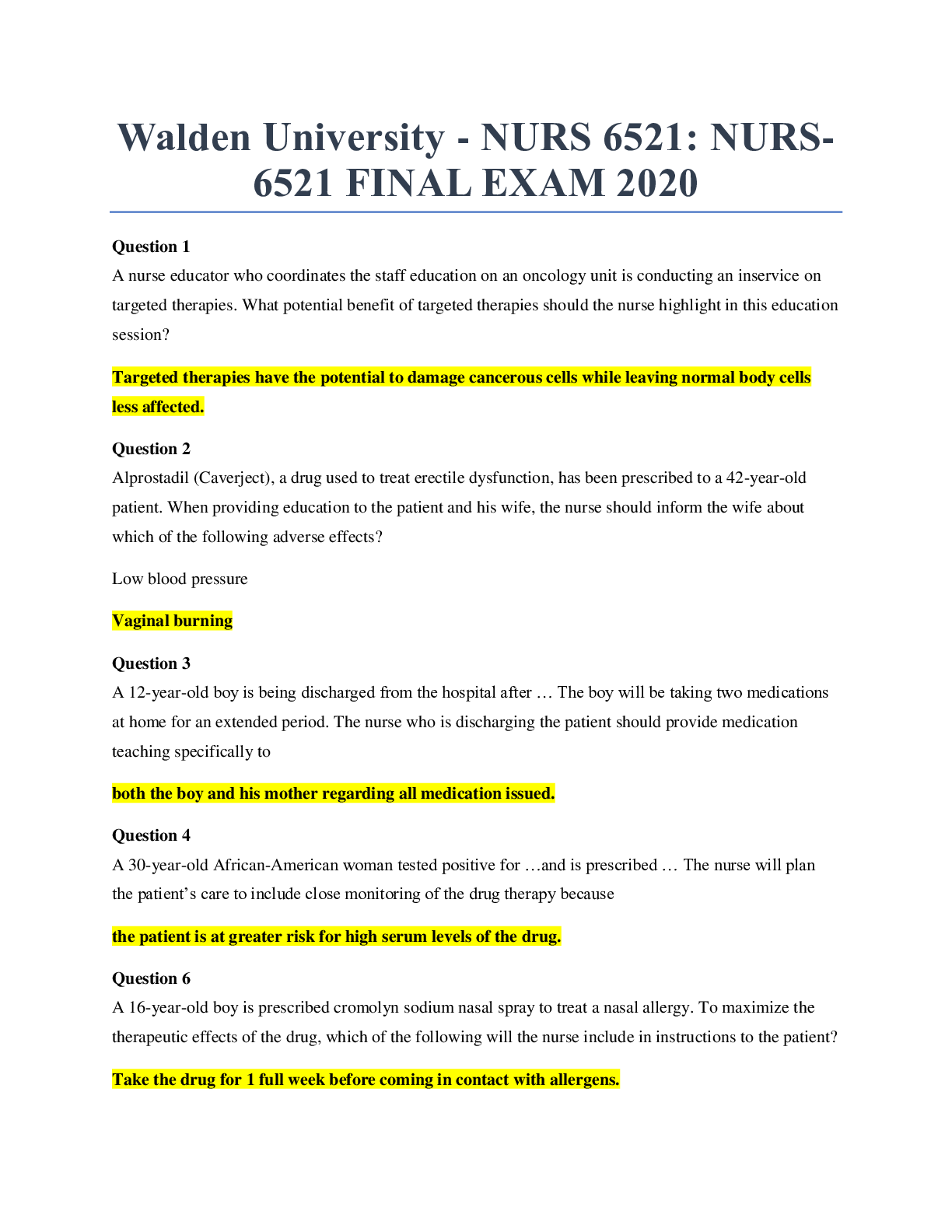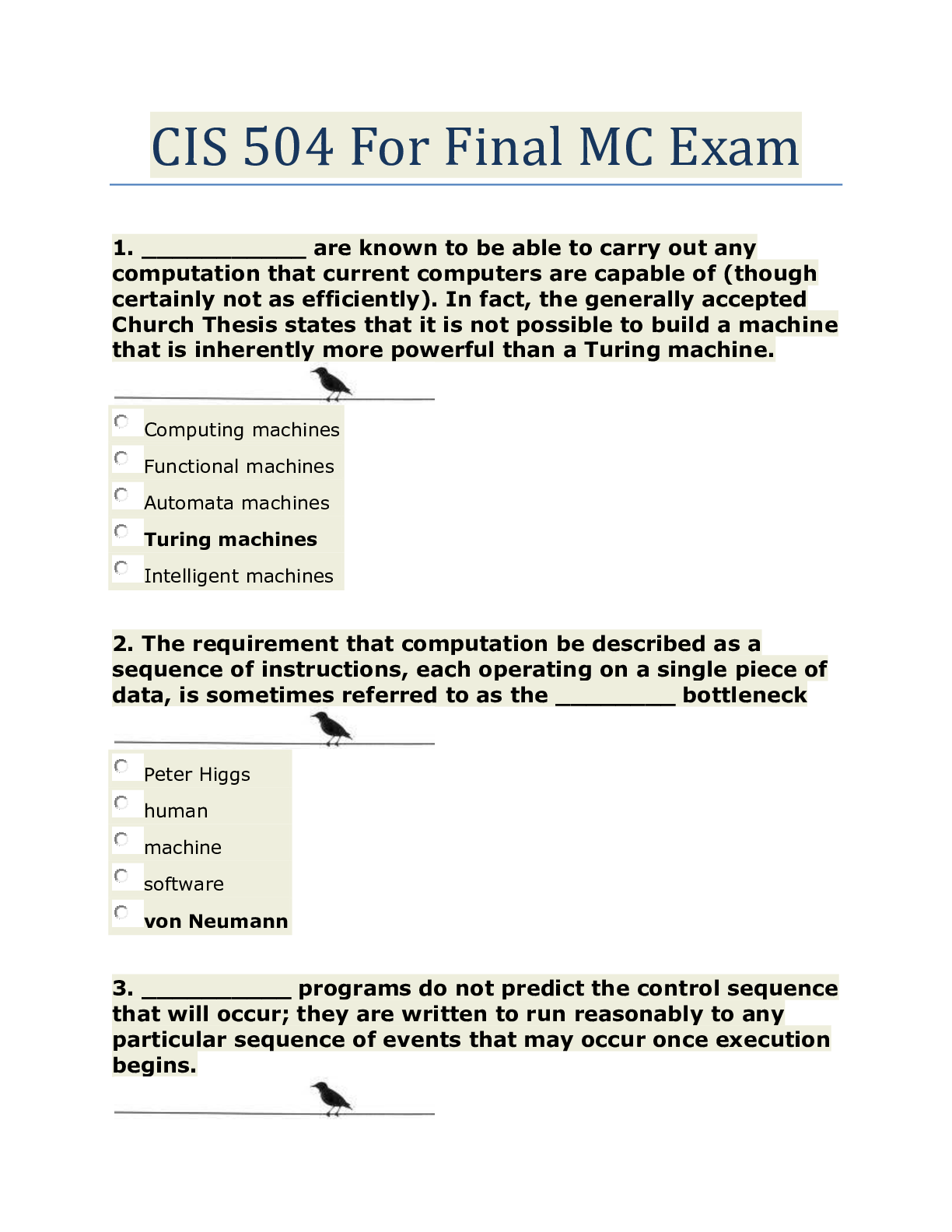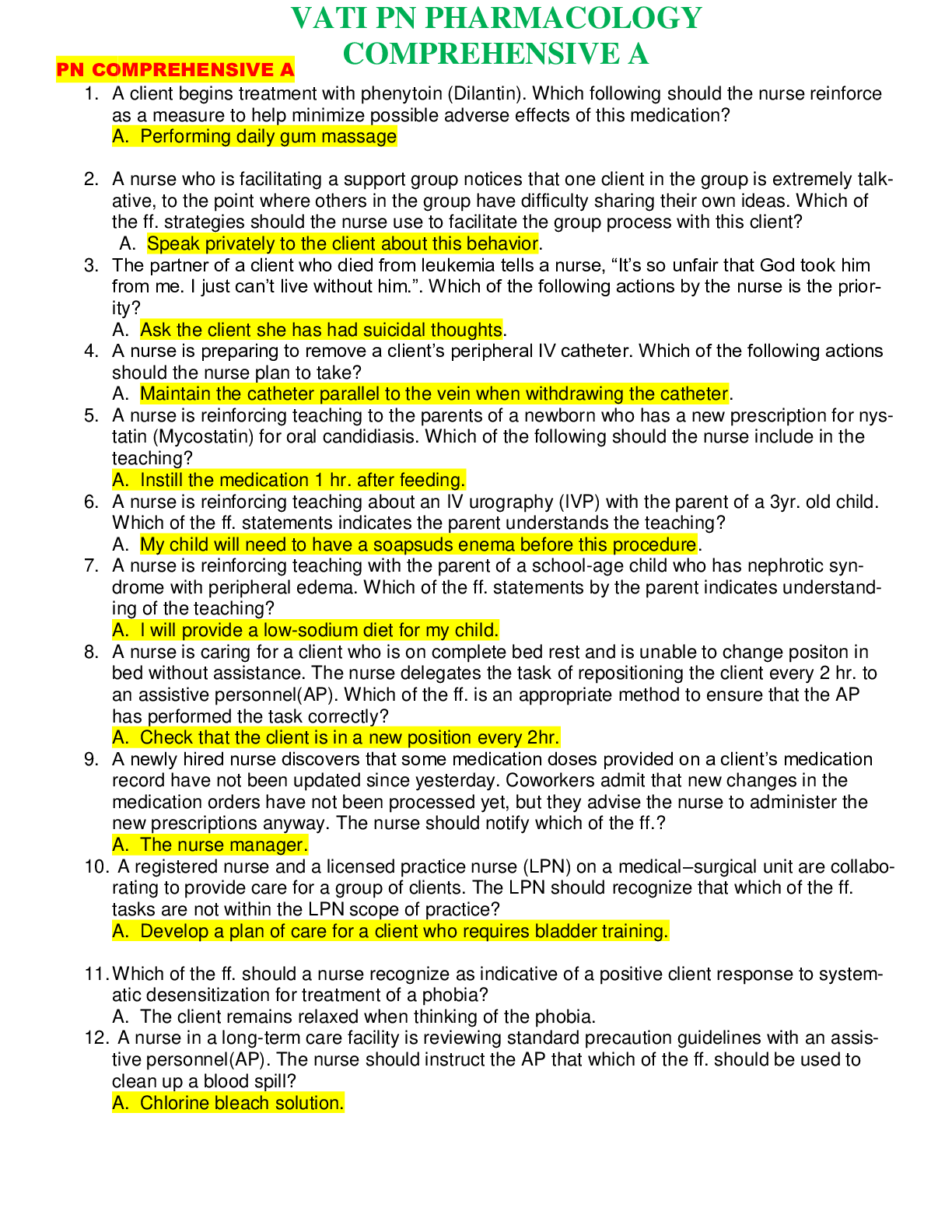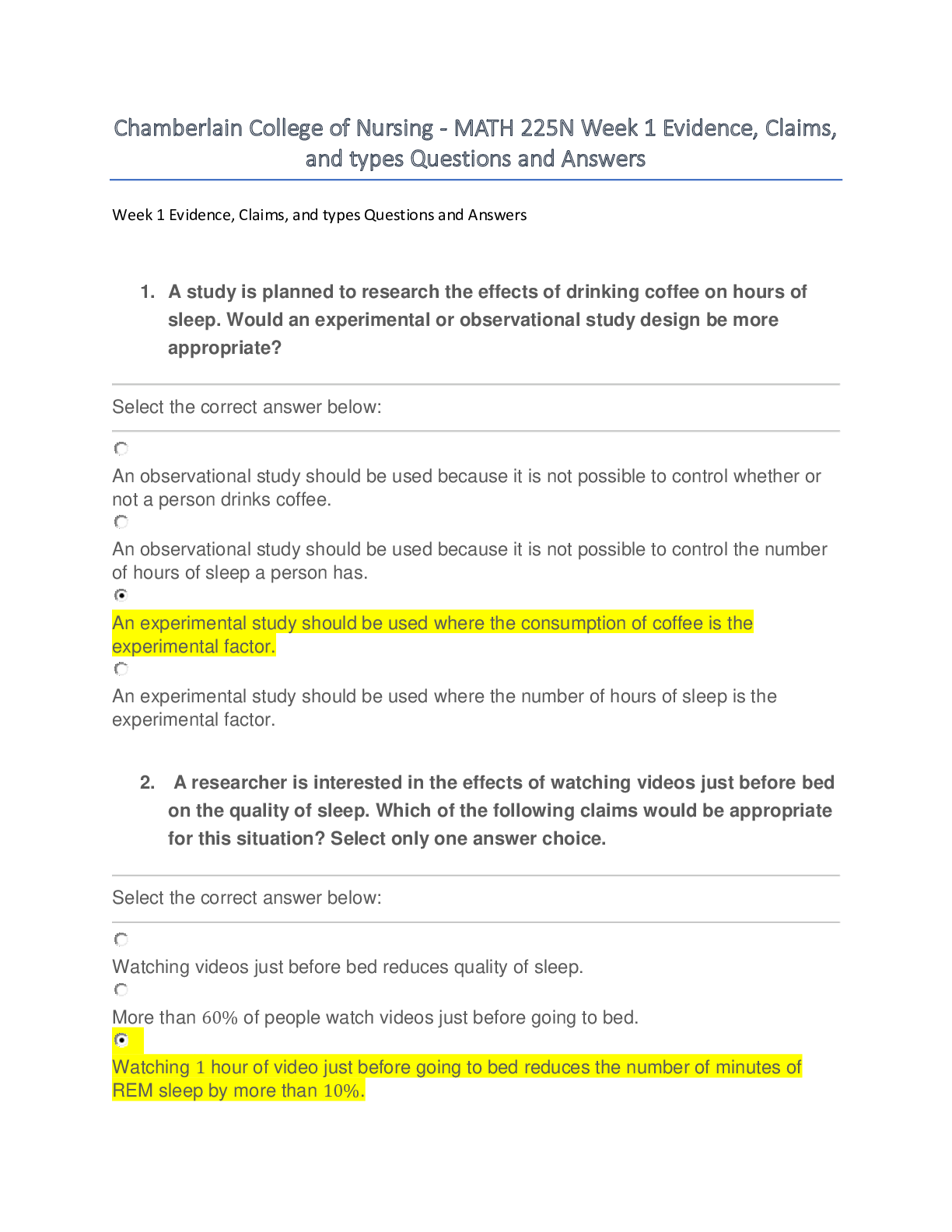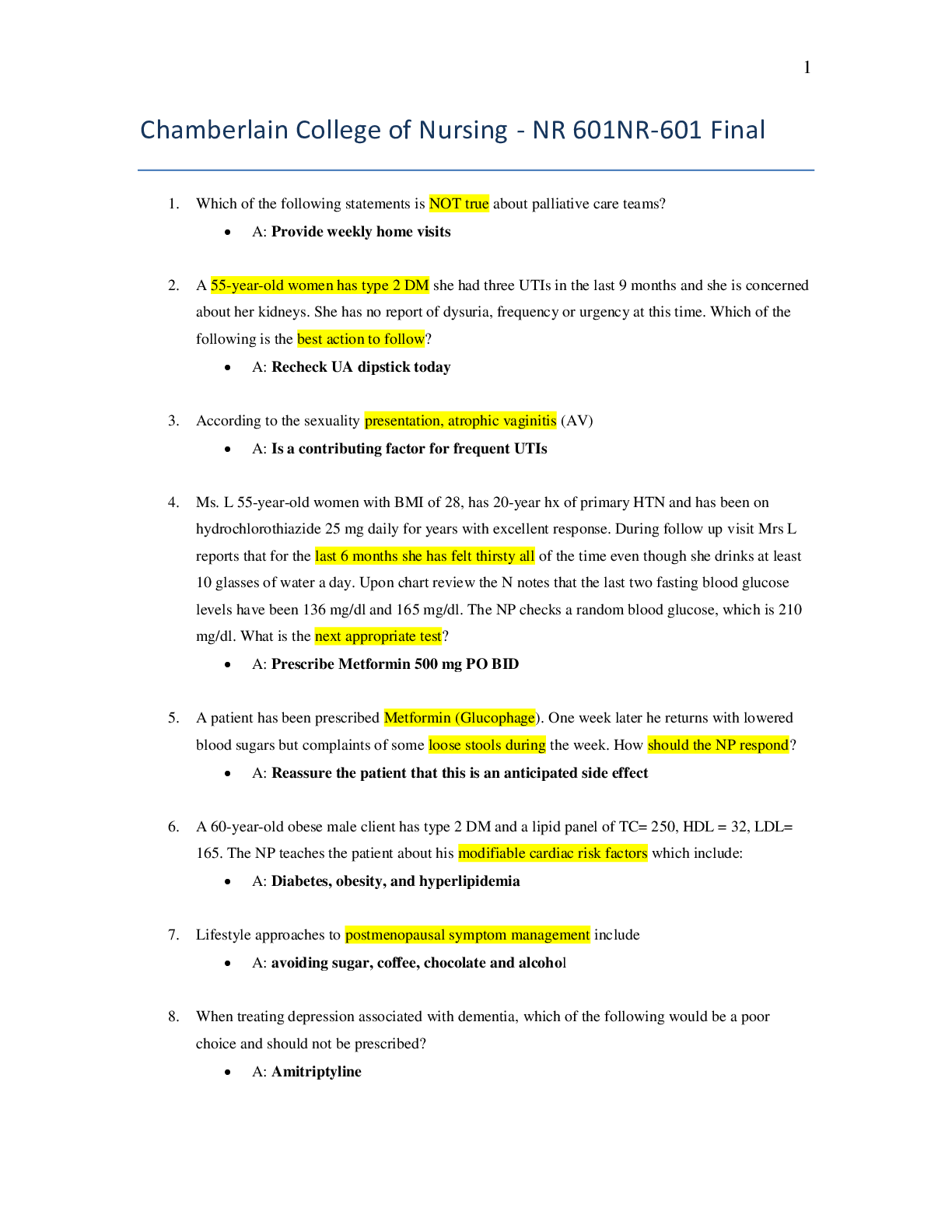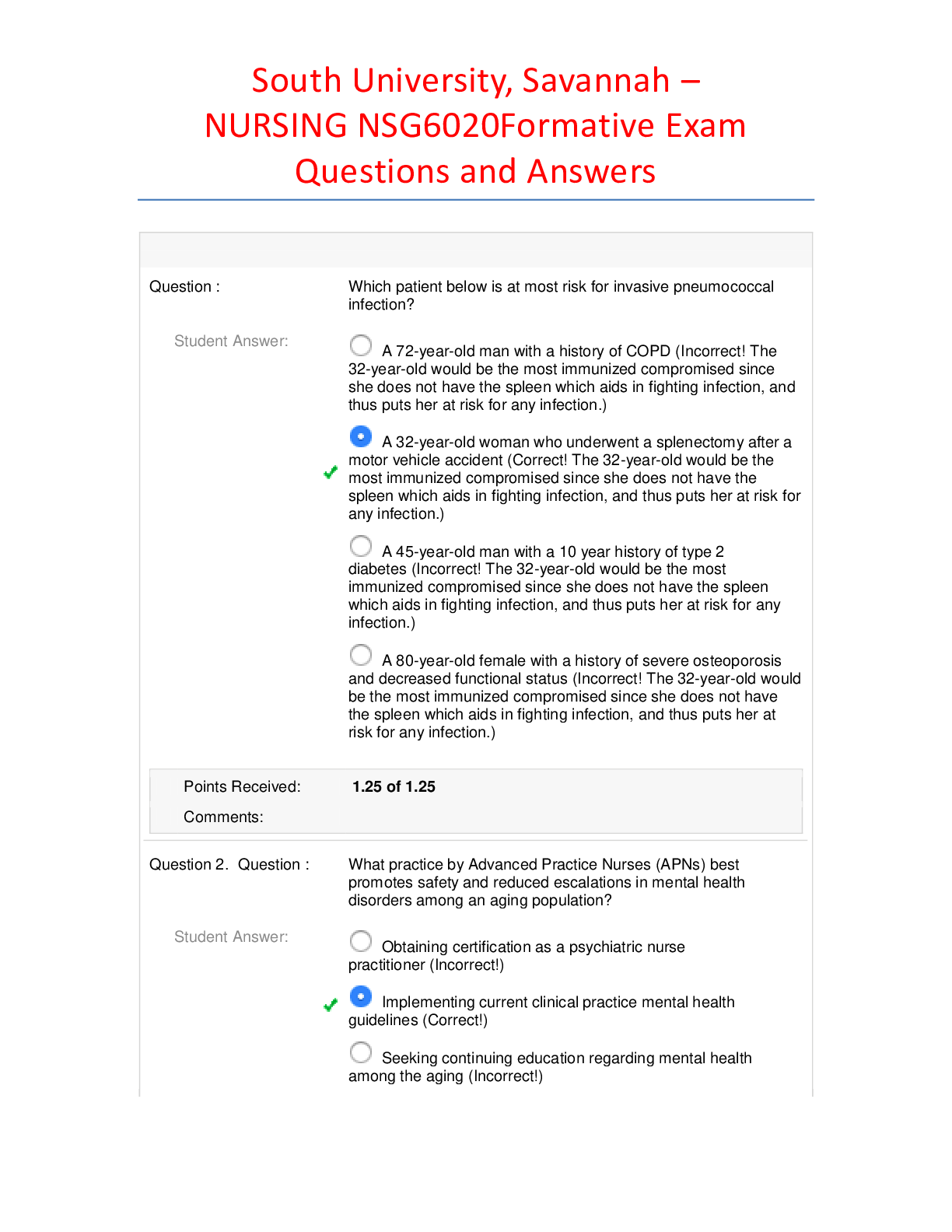SOCI 1000 Sociology Midterm. 50 Questions and Answers. All 100% Correct.
Document Content and Description Below
SOCI 1000 Sociology Midterm Exam 1) Emile Durkhkeim, a classical sociologist who is seen as one of the “founders” of modern sociology, demonstrated the use of multivariate theory in his writing... s on suicide. a. True b. False 2) Karl Marx, argued that every society contains inherent conflicts that propel historical change a. True b. False 3) The textbook states that it is very difficult to define the word ‘culture’. Why is this so challenging? a. ‘Culture’ can have many meanings and can be used in many different ways b. Even the person who coined the term didn’t quite know what it was c. Because ‘culture’ doesn’t really exist, and is therefore impossible to define d. B and C only 4) Which of the following points about the role of language and discourse is/are true: a. The presence of language structures our very thoughts and consciousness b. Without a vocabulary to label events, we cannot remember them c. It is possible for concepts to exist in one language that are not entirely translatable into other languages d. All of the above 5) Which is not true of structural functionalism a. It is associated with Comte, Weber, and Durkheim b. It is descriptive as opposed to critical c. It views society as a series of interrelated “organs” d. It argues that social structures exist that keep the poor impoverished and the rich wealthy 6) Cultural capital is the ability of manufactured culture, in the form of art, fashion, etc., to capitalize – that is to make money – in the markets of the economy a. True b. False 7) The major school of sociological theory that argues that the current social system and institutions work in the interest of those with power, to the detriment of those without, is called a. Structural functionalism b. Symbolic functionalism c. Conflict theory d. Constructive ontology e. Positivist ontology 8) Ideology was defined in lecture as a. A belief system that supports the beneficial functioning of a social system b. An idea that is only believed by those in power c. Any socialist idea d. Any false belief e. An idea that benefits a particular group of people 9) In Marxian theory, the group that owns the “means of production” is referred to as a. The bourgeoisie b. The proletariat 10) In Marxian theory, the group that owns only their labour power is called, a. The bourgeoisie b. The proletariat 11) The major school of sociological theory that argues that people act toward things based on the meaning that those things have for them; and these meanings are derived from social interaction and modified through interpretation, is called a. Conflict theory b. Structural Functionalism c. Symbolic Interaction d. Positivist ontology e. Epistemology 12) “ontology” refers to _______ while “epistemology” refers to _______ a. The way you believe the world is; what you can know about the world b. What you can know about the world; the way you believe the world is 13) Learning to become a better employee through work experience is an example of: a. Secondary socialization b. Primary socialization c. Reconciliation d. Anticipatory socialization 14) A young impoverished girl learns to understand the workings of high fashion and high culture by reading Vogue magazine. This is an example of a. Secondary socialization b. Primary socialization c. Reconciliation d. Anticipatory socialization 15) Which major school of sociological theory is criticized as being ethnocentric, patriarchal, and ignorant of power inequalities? a. Conflict theory b. Structural functionalism c. Symbolic interactionism d. Positivist ontology e. Epistemology 16) In lecture, historical-comparative research methods were associated with a. Emile Durkheim b. Max Weber c. Karl Marx d. Adam Smith e. Pierre Bourdleu 17) Emile Durkheim is notable for his study of a. The protestant work ethic b. Monopoly capitalism c. Symbolic violence d. Epistemology e. Suicide 18) Which of the following statements is NOT TRUE regarding culture a. It is the set of shared attitudes, values, goals, and practices that characterises an institution, organization, or group b. It is often monolithic and circumscribed in that it is not diverse and the borders of cultures are usually clear c. It is primarily based in language – the set of symbols that humans use to communicate and order their understanding of the world d. Culture is not monolithic, nor is it stagnant, nor does it have definite borders 19) Regarding semiotics, which is true? a. Sign = Signified + signifier 20) When we speak of aesthetics, it seems that usually a. Low culture is the same as high culture b. Low culture = Mass culture c. High culture = Mass culture d. All of the above e. None of the above 21) According to the Pierre Bourdieu, “cultural capital” is the social value of a. What you know b. What you have c. Who you know d. Not that important e. All of the above 22) The Durkheim conception of “class” a. Is defined in two strict categories that are dependant on relation to the “means of production” b. Is a set of categories of wealth arbitrarily placed along a continuum 23) For Karl Marx, ones “class” was determined by a. The amount of money they owned in terms of gold b. The amount of money they earned in a given year c. Their relation to the “means of production” d. Their social-spatial relation to the central bank e. Their ability to discern quality wines 24) A Gini Coefficient of 0 means a. Perfect equality b. Perfect inequality c. High economic growth d. Low rating in the Human Development index e. An absence of poverty 25) The richest 20% of the global population have a. Over 80% of the global income b. About 50% of global income c. About 30% of global income d. Under 20% of global income 26) Countries with the most equality a. Tend to have less economic growth b. Tend to have higher rates of economic growth 27) Over the last 20 years in Canada, income inequality has a. Decreased b. Increased c. Stayed the same 28) In Canada, the richest 20% of the population control a. About 60% of the income b. About 80% of the income c. About 40% of the income 29) Wealth measures ______ whereas income measures _______ a. The amount of physical property one has; the amount of cultural influence one has b. The amount of money and other things one owns; the amount of money one makes in a year c. The amount of money one makes in a year; the amount of physical property one has 30) On average, this ethnic group has the highest income in the United States a. Canadians b. African Americans c. Asian Americans d. European Americans 31) To make value judgments about another culture from perspective of one’s own cultural system is a. Racism b. Fundamental c. Bigotry d. Ethnocentrism e. Nationalism 32) Gender is a. A naturally determined dichotomy for differentiating humans into the biological categories of “males” and “female” based on distinctive physical differences b. A set of shared cultural understandings of how men , women, girls, and boys should look and act 33) Mainstream “western” culture rends to reinforce the idea that there are a. Continuous sex categories b. Five sex categories c. Infinite sex categories d. Dichotomous sex categories e. No sex categories 34) According to lecture slides, the sociology of communication begins with the premise that a. Communication b. Culture is the product of communication c. We are the product of communication d. All of the above e. Non of the above 35) “A group of ideas and understanding about a topic that is communicated through language” is the definition for a. Ideology b. Discourse c. Language d. Hegemony e. Cultural capiral 36) “A word, phrase, or ideas that seems to self-replicate through society” is known as a a. Discourse b. Hememony c. Meme d. Social structure e. Genetic Code 37) “A blank human space that is populated by discourses and/or memes” is a a. Personality b. Subjectivity c. Culture d. Nation e. Meme-space 38) Communication systems a. Are the social and technical systems through which we communicate and organize our communication b. Shape communication c. Shape our subjectivities d. All of the above e. None of the above 39) “Institutions in our society which employ the characteristics models of production and organization of industrial corporations to produce and disseminate symbols in the form of cultural goods and services as commodities,” is the definition for a. Cultural industries b. Mediascapes c. The culture industry d. Hegemony e. Capitalism 40) The productive arrangement in which culture itself is produced in a capitalist system was labeled by the members of the Frankfurt School as a. Cultural industries b. Mediascapes c. The cultural industry d. Hegemony e. Capitilism 41) Which of the following would cause markets to fail? a. Perfect competition b. Perfect Information c. Increased marginal returns to scale d. Consumer sovereignty e. All of the above 42) In most “cultural industries” the following conditions actually exist a. Perfect competition b. Incomplete information c. Decreasing marginal returns to scale d. Consumer sovereignty e. All of the above 43) According to the Birmingham School of cultural studies, the way in which messages are encoded and decoded through media is dependant on a. Frameworks of knowledge b. Cultural symbiosis c. Modulating capacitors d. All of the above e. None of the above 44) The Disney Corporation uses manual labour in developing countries to manufacture toys based on Disney characters. However, production and animation is still done industrialized countries. This is an example of: a. Cultural globalization b. International division of labour c. The rise of Marxism d. Insourcing e. Both C and D 45) Most mass media in Canada is privately owned a. True b. False 46) Under-representation is when members of minority groups are portrayed in negative ways a. True b. False 47) Macrosociology may deal with ____, while microsociology may study _______. a. Face to face interaction, large corporation b. Small groups, large groups c. Government bureaucracies, a business meeting d. Aboriginal Canadians, the elderly 48) Each of these statements about the sociological imagination is true EXCEPT: a. C. Wright Mills introduced the term b. It enables us to relate personal biographies c. Aids us in understanding how societies control and change their members d. Helps us see how we are responsible for our own actions 49) Independent variables are equivalent to _____, while dependant variables are equivalent t a. Theories concepts b. Concepts, hypothesis c. Causes, effects d. Effects , cause 50) Empirical research is a. The act of systemically observing, testing, experimenting, and/or, gathering data for the purpose of understanding phenomena [Show More]
Last updated: 2 years ago
Preview 1 out of 7 pages

Buy this document to get the full access instantly
Instant Download Access after purchase
Buy NowInstant download
We Accept:

Reviews( 0 )
$9.00
Can't find what you want? Try our AI powered Search
Document information
Connected school, study & course
About the document
Uploaded On
Dec 19, 2020
Number of pages
7
Written in
Additional information
This document has been written for:
Uploaded
Dec 19, 2020
Downloads
0
Views
126

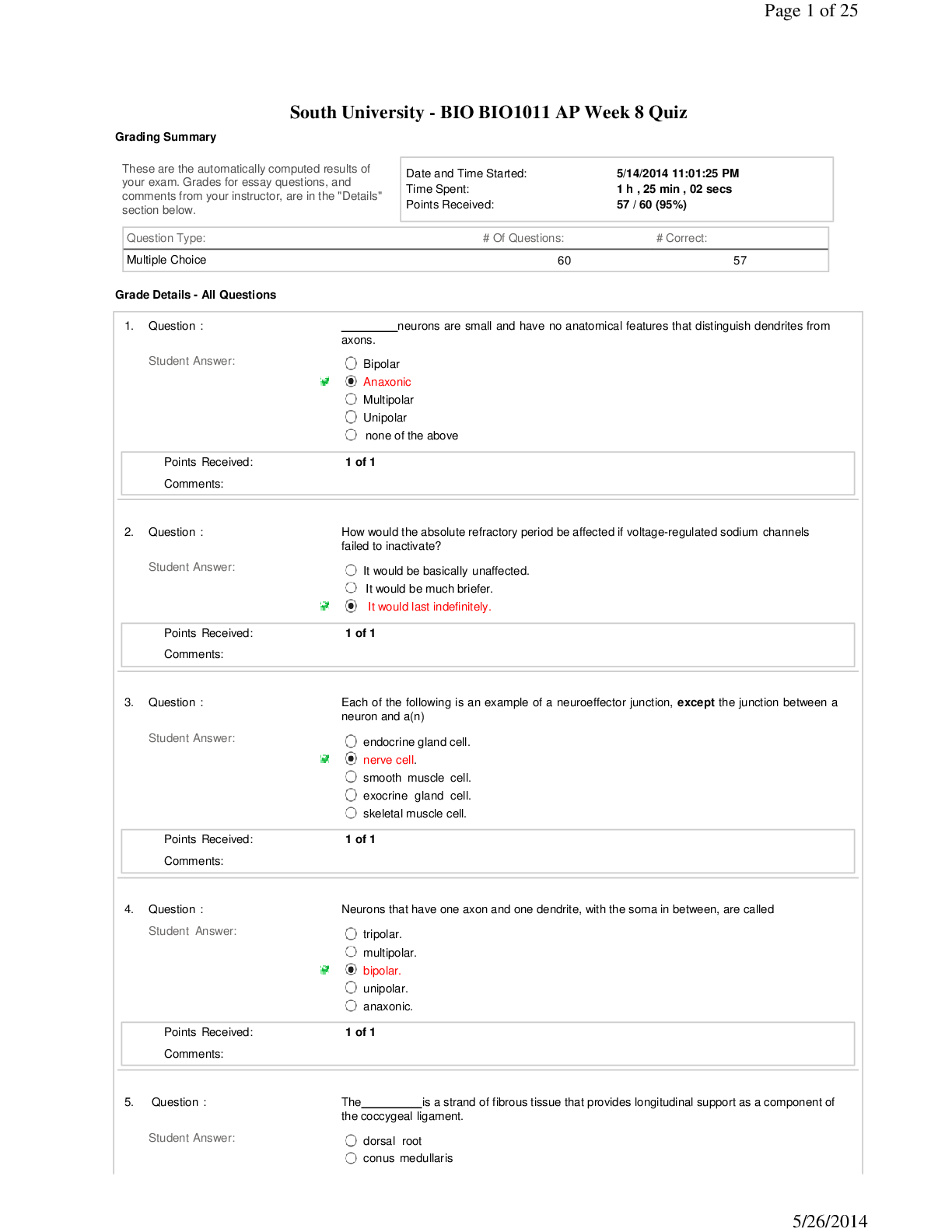
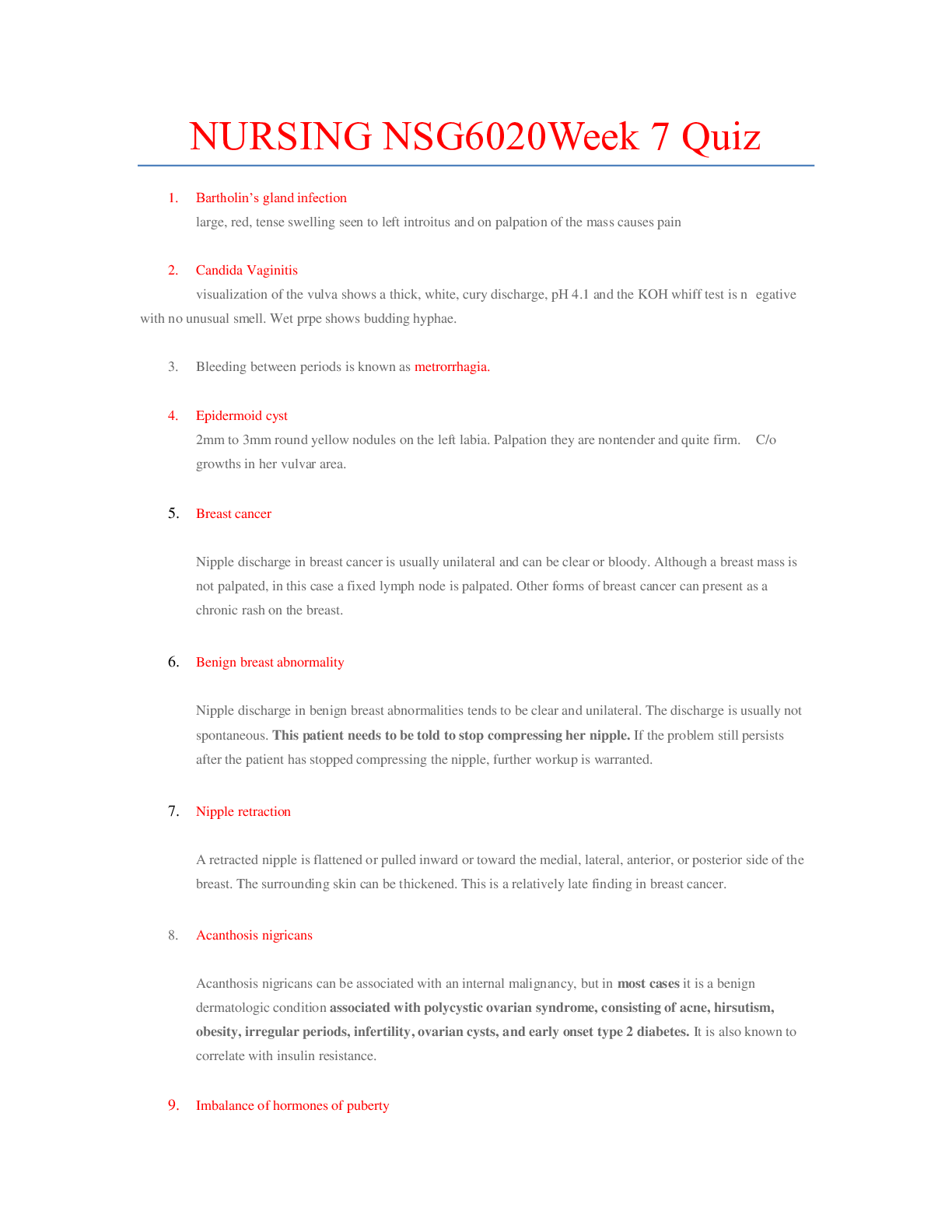
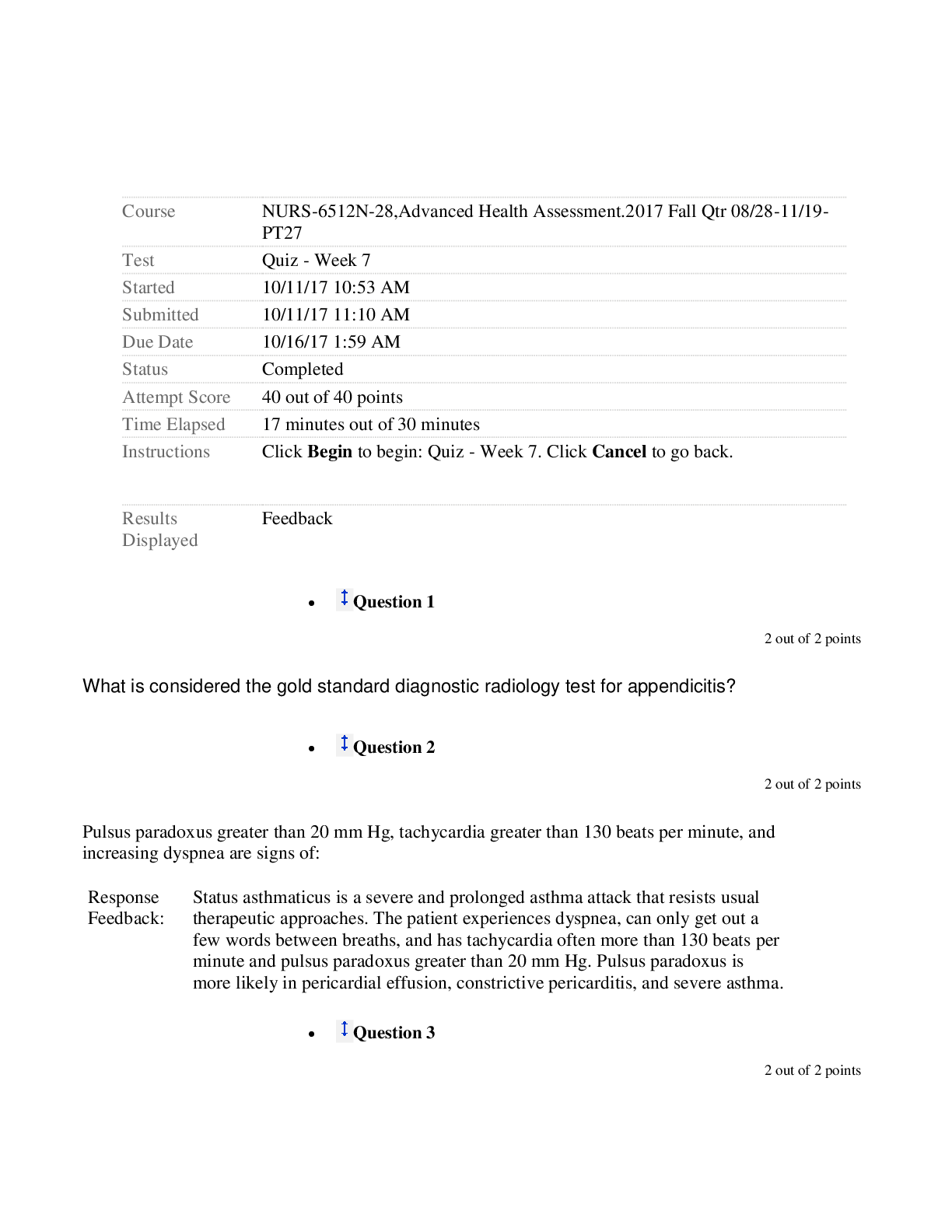



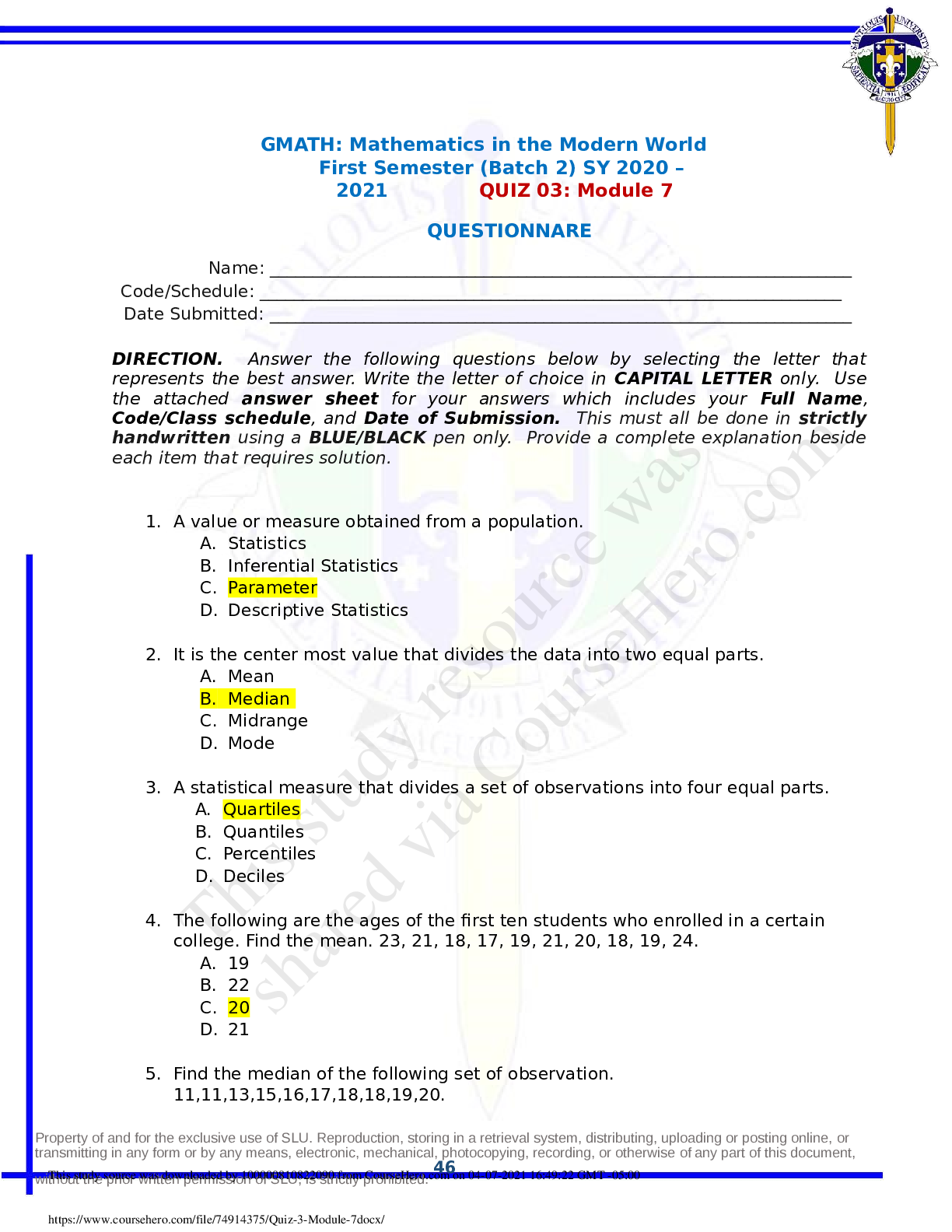



.png)



